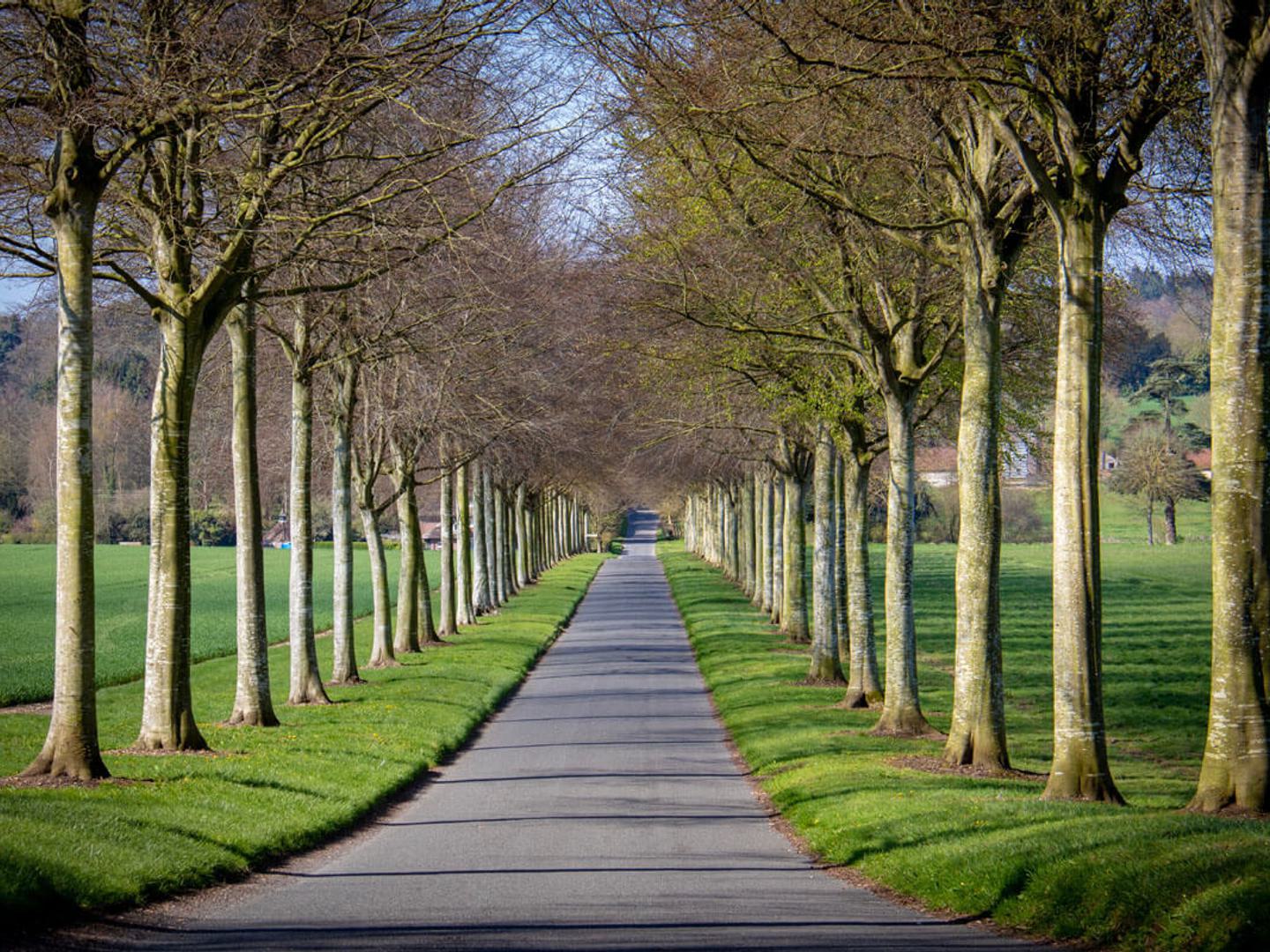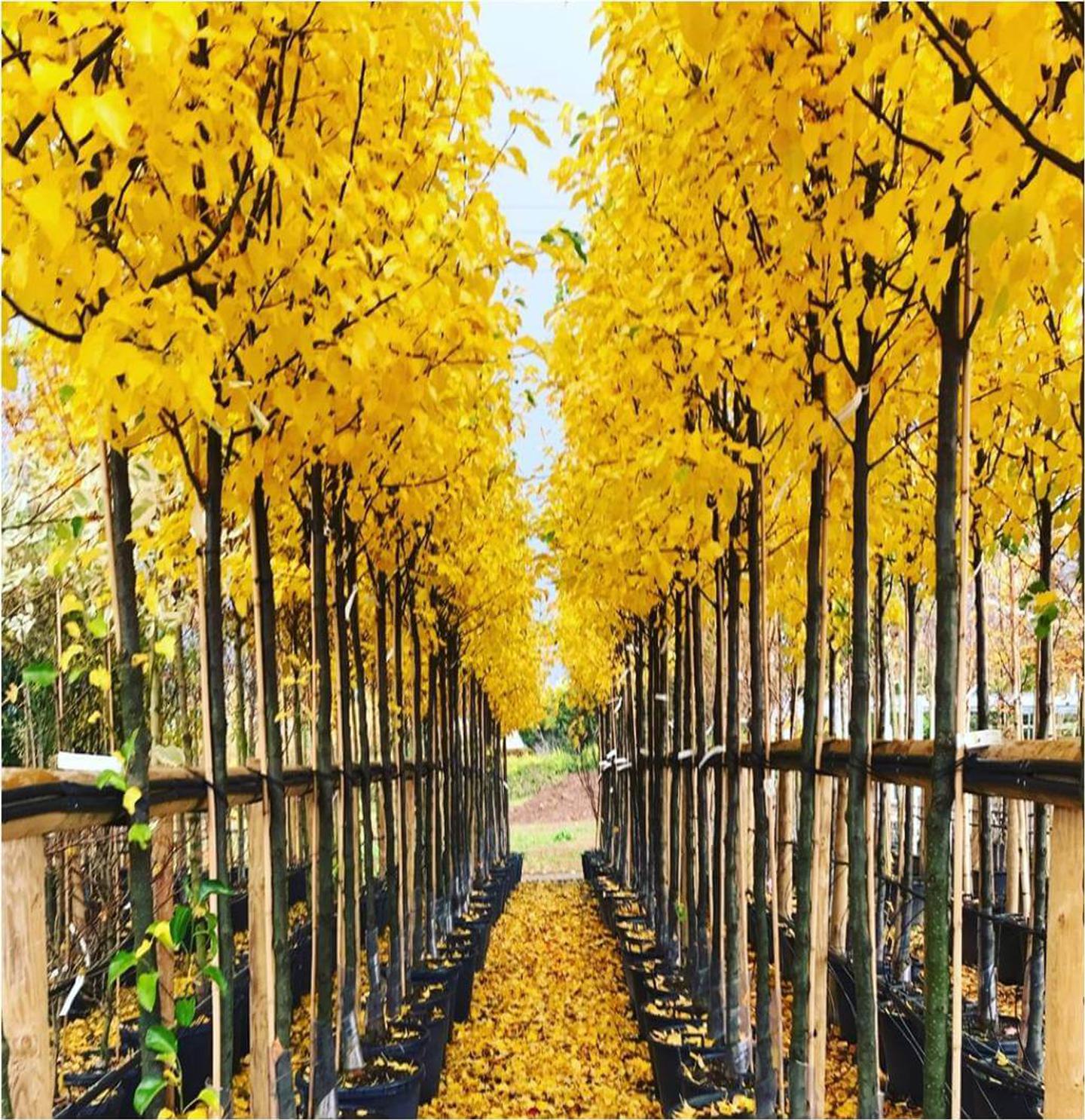Blog
Planning an avenue
27th Nov 2023

Whether it's to enhance the grandeur of a long driveway or to demarcate a boulevard in a park, a tree-lined avenue is a thing of beauty. Standing like sentries in a row, the lines of repeated species are an ubiquitous element of the formal gardens of aristocratic residences, harking back to the spirit of Versailles and Rococo style.
The term avenue is derived from the Latin venire, to come, and a pathway with trees either side does indeed pull you along it, though it's also a fine place to stop and admire their stately forms. Of course it takes many years for those heavenly proportions to develop, so planting an impressive avenue constitutes a serious investment that you will want to get right first time. The same goes even if you are creating a miniature version with smaller trees.
Here are our recommendations for planning and planting an avenue.
Is the site suitable for an avenue?
Before dreaming any further on the subject, bear in mind that a series of trees will cast shade on the ground below. The degree of shade will depend on the closeness of planting, density of the canopy and height of trees, of course. Consider the angle of sunlight at different times of year and decide whether this will be problematic.
Trees will also screen off some views, which creates intrigue, but do think about this.
Hard landscaping may be affected by tree roots, if planted too close by and/or if the species is large-growing.
What ultimate height do you want your trees to reach?
Although it may be your grandchildren rather than you who get to enjoy your efforts at their peak (depending on the speed of growth of your chosen species), the first factor to consider is what lofty heights you are happy for your avenue to reach.
Some classic choices for avenues can get to 30m (100ft). Will this be in proportion with the length of your driveway/path/buildings and the surrounding environment? If the other elements in the landscape are modest in size, smaller trees will be more in keeping - and vice versa, large buildings need to be balanced by planting that has size and significance. Ultimately, the trees will frame features at the end of the avenue, so keep this in mind (what will it look like in 10, 50 and 100 years?)
What features and seasonal interest would you like to see?
Evergreen or deciduous, conspicuous flowers, autumn colour, a certain shape, summer leaf colour, autumn fruits, interesting bark? If you have certain features in mind for your avenue, this will help to narrow your choice of tree.
Are there any special requirements with regards to conditions?
If the site is waterlogged, very windy or very dry, this will guide your choice of species.
Spacing
Spacing will depend on the species you choose and the effect you want to create. Within each line, the closer the spacing the more dramatic the feeling of enclosure. The more trees you plant, however, the more expensive the outlay!
Trees that are destined to grow large but are diminutive at the time of planting can be planted at a spacing that creates the avenue effect immediately, and later be thinned out to accommodate their size. Some people also choose to intersperse large trees with smaller, to get an instant effect but with the intention of taking out the smaller trees in time.
Maintenance
At various stages, you may want to remove lower branches to raise the canopy of your trees, or if you are after a topiary avenue, regular trimming will be required. At the outset, give some consideration to how practical this type of maintenance will be.
Broadleaved trees for avenues
Small
Thorn trees / Hawthorn(Crataegus) e.g. Crataegus prunifolia Splendens
Cherry trees (Prunus) e.g. Prunus avium Plena, Prunus Umineko, Prunus Sunset Boulevard
Medium
Fastigiate hornbeam (Carpinus betulus 'Frans Fontaine') or Pyramid hornbeam (Carpinus betulus 'Fastigiata')
Himalayan birch (Betula utilis)
Ornamental pear (Pyrus calleryana Chanticleer)

Large
Lime (Tilia) e.g. Tilia cordata
Beech (Fagus sylvatica)
London plane (Platanus x acerifolia)
Conifer trees for avenues
Italian cypress (Cupressus sempervirens Pyramidalis or Totem)
Blue Pencil Juniper (Juniperus scopulorum Skyrocket)